Architecture is one of the critical components of the identity of many destinations around the world. Columns in Greece, hanoks in South Korea, utopian buildings in Germany, and ornate flourishes in France are just four of what seems to be an infinite collection of architectural elements and designs which have been developed over the centuries…
Virtual Tour of Three Frank Lloyd Wright Houses Which Were Never Built
…and Frank Lloyd Wright comes to the minds of many people as the premier eminent designer of architecture in the United States — but many of his designs during his career of seven decades had never come to realization in the three-dimensional world; and approximately 100 of the structures which he had designed have even been destroyed by a number of factors.
I have been given express written permission to use the illustrations and the verbatim text from this article — which was written by Kaitlyn Pacheco from Angi — of three houses which were designed by Frank Lloyd Wright but never built. While Angi has endeavored to ensure the information provided is accurate and current, it cannot guarantee it. Neither Angi nor The Gate accept liability for the information which is presented in this article.
Three Houses Which Frank Lloyd Wright Designed But Never Built
Frank Lloyd Wright changed the course of America’s architectural history. Angi brings three of his unrealized designs to life as digital renders.
Some architects leave a deeper imprint on the landscape than others. More than 60 years after his death, Frank Lloyd Wright remains a rarity: an architect who is a household name. Considered the first truly American architect and the first superstar of his trade, FLW lives on through his buildings, influence, and collective imagination.
Remarkably, more than half of Wright’s 1,171 architectural works never took a solid form. While unbuilt FLW homes occasionally materialize on the American landscape, 660 of his building designs remain confined to paper.
Wright’s plans and visualizations are things of beauty, but to experience how his unrealized sketches might feel requires a great leap. So, we chose three unbuilt Frank Lloyd Wright houses and brought them to life in realistic 3D renders and floor plans based on Wright’s drawings so you can get a glimpse of their beauty and maybe even get some inspiration for your own home.
Mrs. David Devin House — Chicago, 1896
In the late 1890s, Wright was still setting out alone as an architect and didn’t have the clout to fight clients over details. His studio was part of his Oak Park home, and his children often interrupted his work, including while he presented plans to his “fashionable, fastidious client,” Aline Devin. According to Wright’s memoir, his daughter Catherine burst in and “deliberately regarded Mrs. Devin curiously—apparently unfavourably.” Thankfully, his client was “highly amused.”
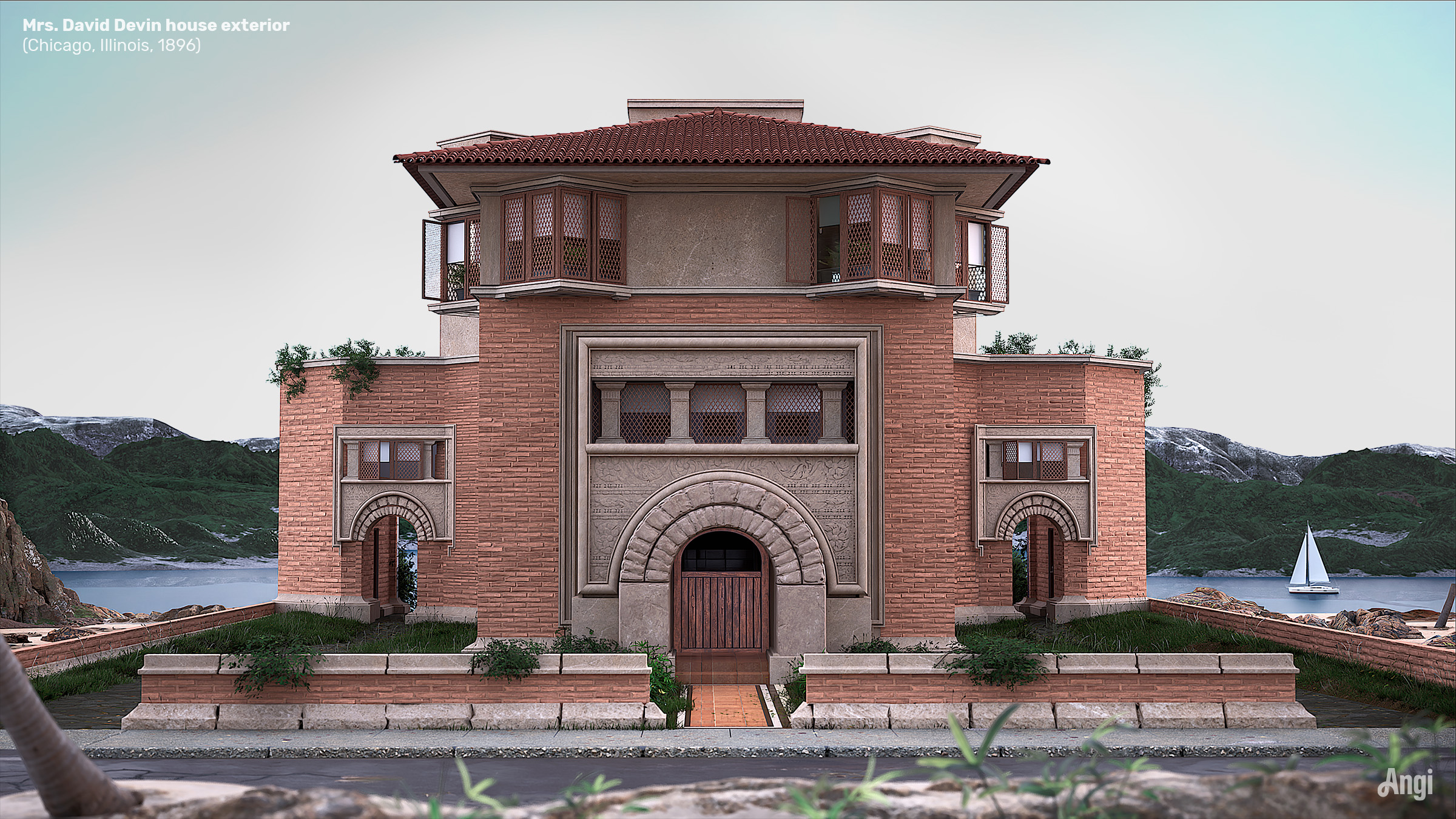
The “fashionable” Devin apparently encouraged Wright to create something special, although the “fastidious” Devin didn’t allow the project to run its course. This one-off experimental design is atypical of Wright’s works. Although Wright was toying with this type of curvy, Sullivanesque ornamentation around this time, the home doesn’t neatly fit his progression as an architect. Unbuilt, it leaves a unique hole in Wright’s history.
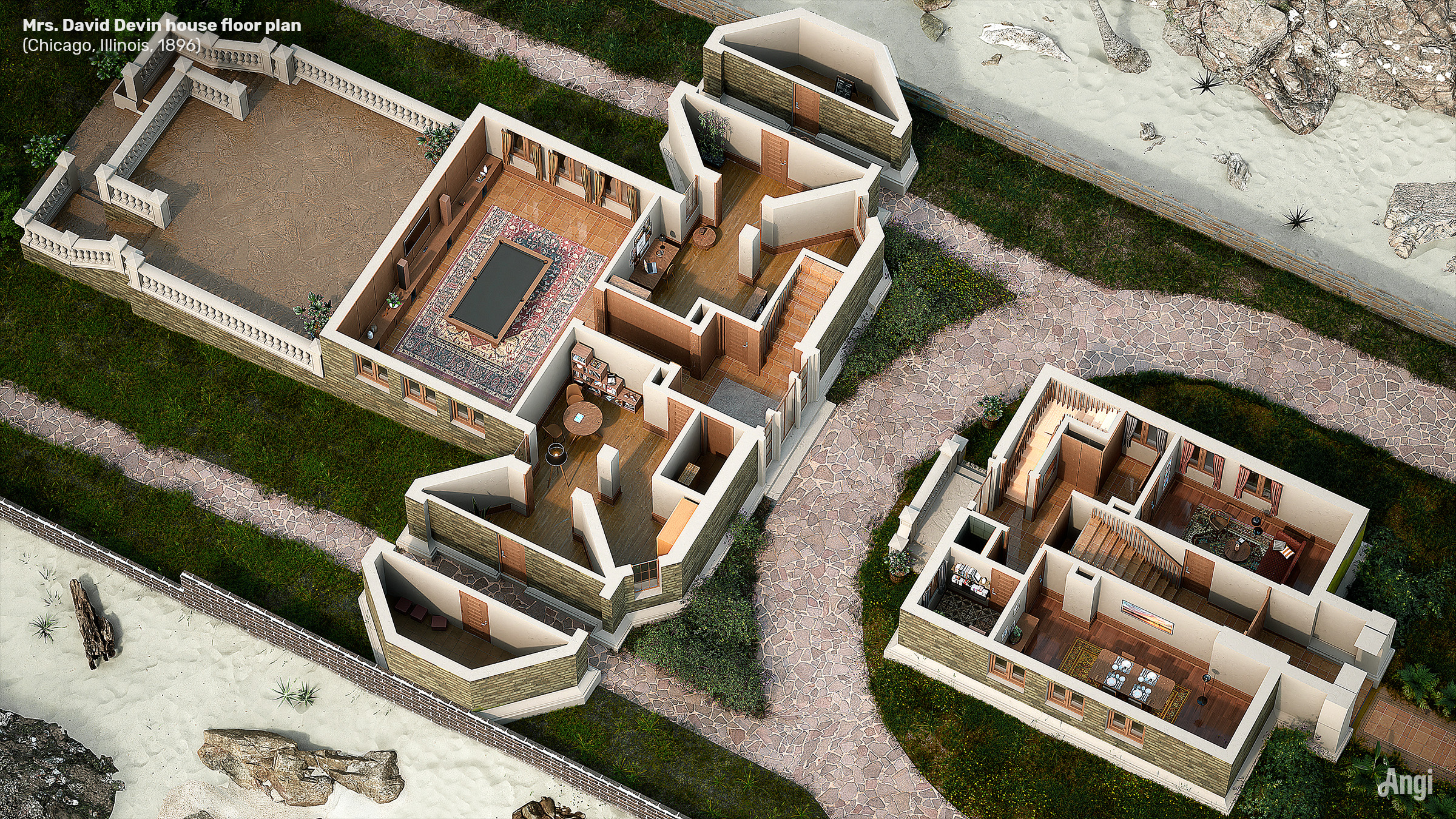
Cottage Studio for Ayn Rand — Connecticut, 1946
“The house you designed for me is magnificent,” wrote the novelist and thinker Ayn Rand to FLW in 1946. “I gasped when I saw it. It is the particular kind of sculpture in space which I love and which nobody but you has ever been able to achieve.”
Rand had first contacted Wright in 1937, researching “the career of an architect” for a novel. The result was Howard Roark, the main character in “The Fountainhead.” Rand insisted that only Roark’s ideas and “the pattern of his career” were based on Wright, but many see a closer likeness.
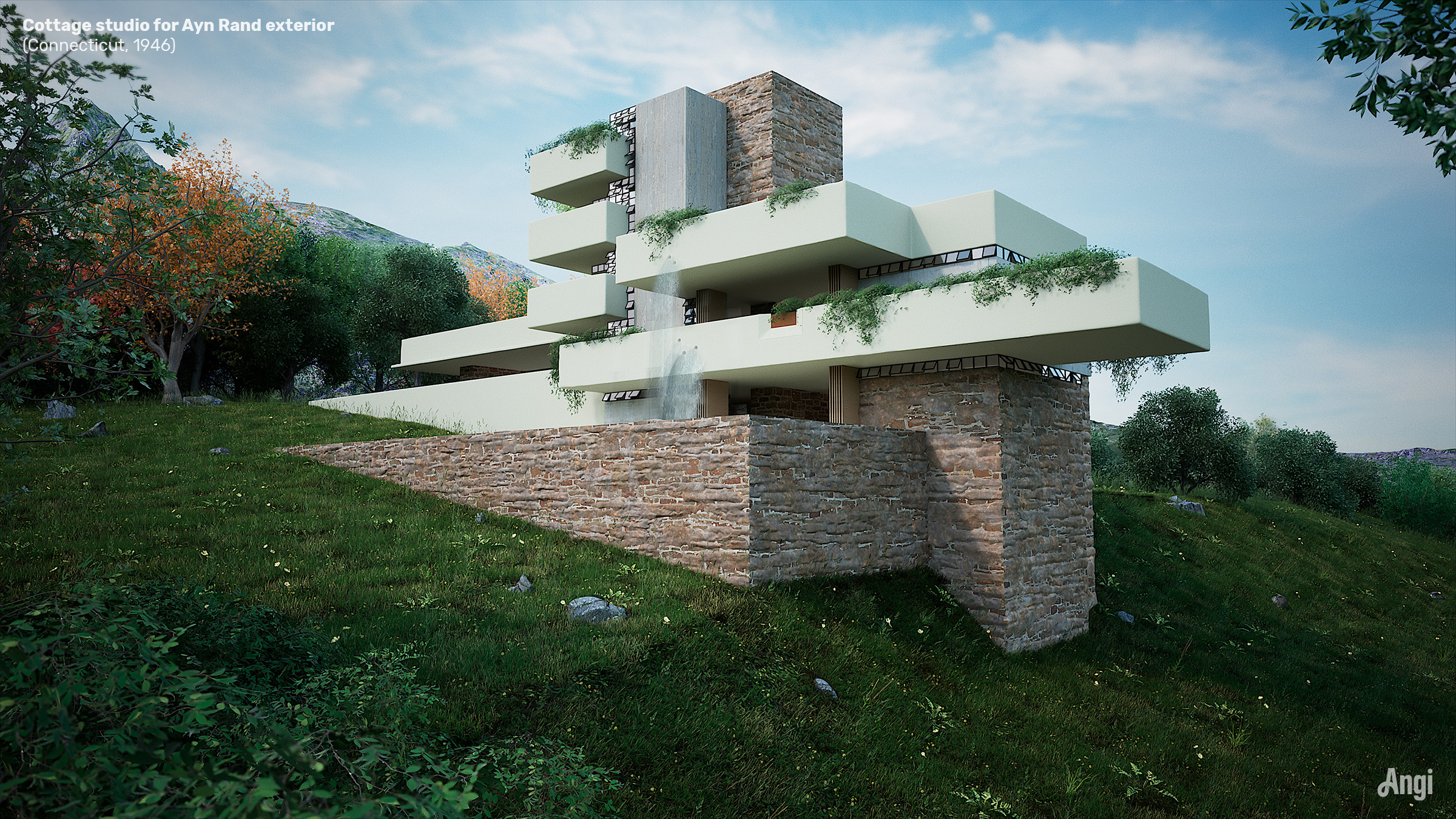
Rand wanted the home — complete with top floor studio offering louvered views to the sea — for a retreat in Connecticut or, if her Hollywood career took off, in Los Angeles. But ultimately, she stayed in Manhattan, NY. Axing the project may have been a relief to Wright, who later said of the fictional Hoard, “I deny the paternity and refuse to marry the mother [i.e., Rand].”
The building marries Rand’s severe streak with Wright’s celebration of nature. Concrete or stucco terraces thrust, cantilevered, from a softer fieldstone spine. And Wright’s addition of vines and fountains only accentuates the impression of a destroyer ship emerging from nature’s depths.
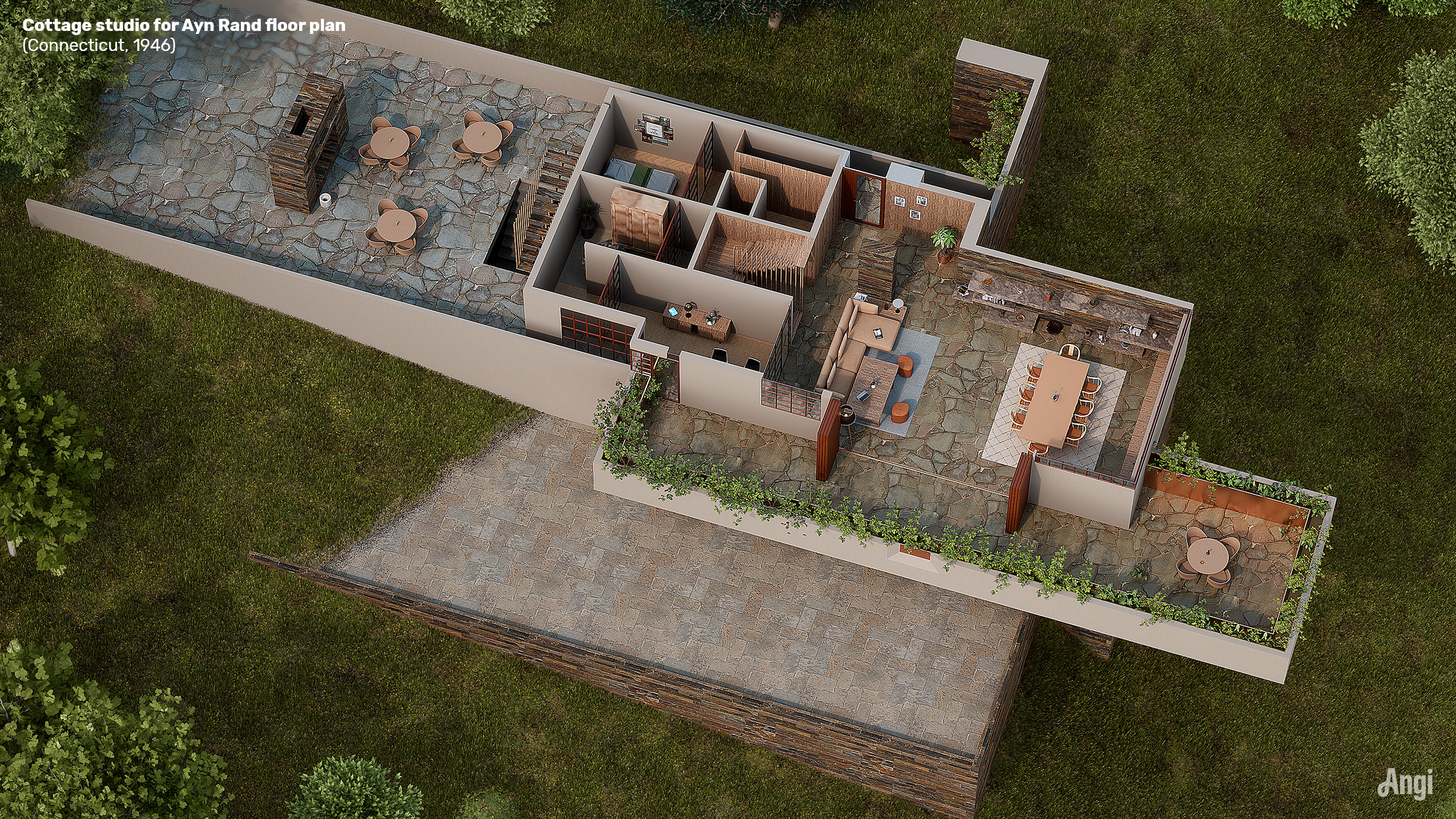
Lake Tahoe Lodge — Lake Tahoe, California, 1923
“The best [buildings] had life only on paper,” wrote FLW in the early 1940s. “The most interesting and vital stories might belong to these children of imagination were they ever to encounter the field. Say, the Lake Tahoe project …”
Wright’s Lake Tahoe Summer Colony was indeed a work of the imagination—designed, without a commission behind it, for an undeveloped 200-acre plot at Emerald Bay. He may even have dreamed of taking over the site from the owner. And his lodge cottages for the site were prototypes, designed to adapt to the land once he could make a closer inspection.

The mountainous site was nestled in woodland. High-walled terraces would further the sense of seclusion from society and attachment to nature. Wright’s truly utopian settlement would also have featured floating cabins in the bay below, accentuating the lodge buildings’ vertical accents.
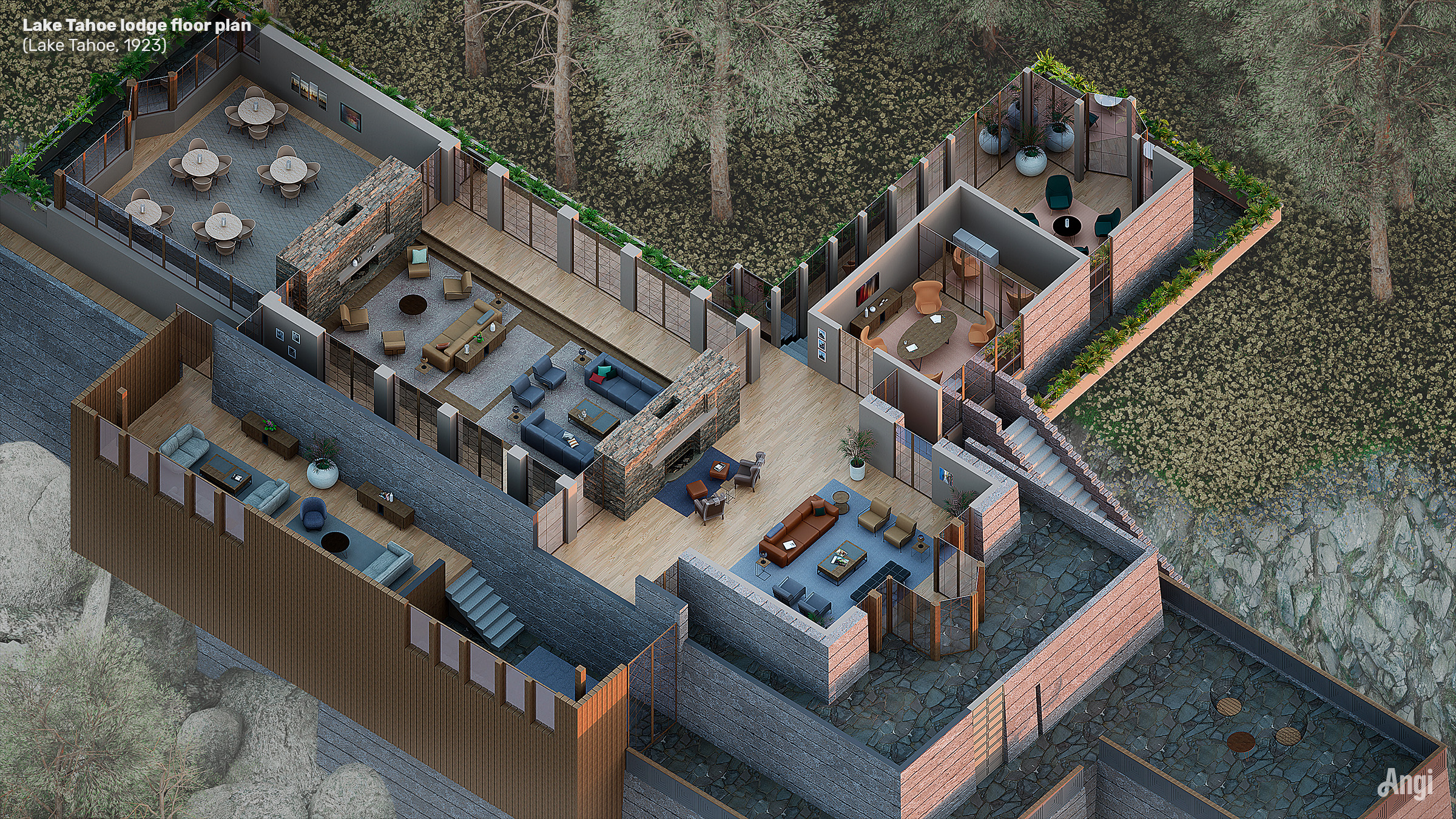
“As any architect knows,” says architect and Wright biographer Sidney Robinson in “Architect magazine,” “the completed building incorporates information that is never drawn, so when the architect is involved in the construction, his or her pattern of choices or selections is incorporated in the building. And when someone builds based on the drawings, there is a gap, and that gap can be serious—or not.”
Hiring the right architect can make or break any building project, and it’s not just about knowing how to draw. Frank Lloyd Wright matched his genius at the drawing table with a respect for the site and the process of construction. But while our recreation of these unbuilt FLW homes cannot capture the spontaneous magic of a building the architect oversaw, we intend them to evoke the power of his plans and sketches as closely as possible to how he might have realized them.
Final Boarding Call
Frank Lloyd Wright won many awards for his work over the decades; and his style of design — which incorporated the waterfalls and other elements of the natural landscape that surrounded his structures and was a key factor in the way he designed many buildings — is still recognized by many people to this day. The Guggenheim Museum in New York was designed by him; and I have been in that building multiple times.
Have you ever been in a building which was designed by Frank Lloyd Wright? If so, which one? Please post your thoughts in the Comments section below.
Photograph ©2017 by Brian Cohen.

